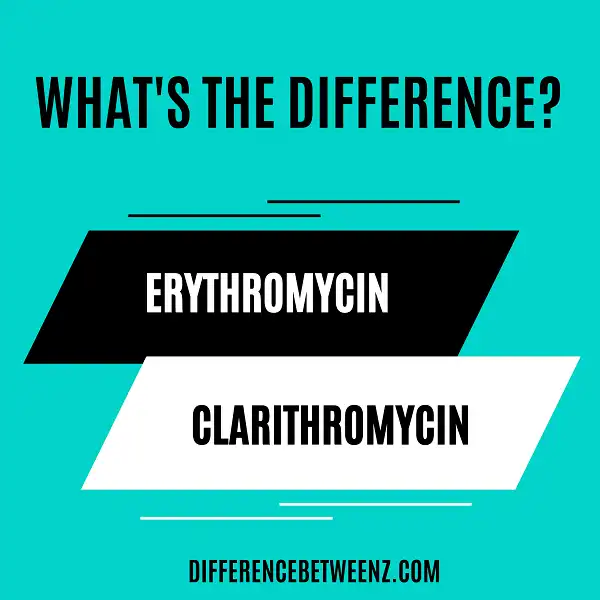Erythromycin and clarithromycin are both antibiotics that are used to treat a variety of infections. Erythromycin is usually the first choice for treating strep throat, while clarithromycin is commonly used to treat MAC, which is a type of lung infection. There are some differences between these two medications, including how they are absorbed and metabolized by the body. Clarithromycin is also associated with a higher risk of side effects than erythromycin. However, both medications can be effective in treating infection when used appropriately.
What is Erythromycin?
Erythromycin is a macrolide antibiotic that is used to treat bacterial infections. It belongs to a class of drugs called bacteriostatic antibiotics, which work by stopping the growth of bacteria. Erythromycin is effective against a wide variety of bacteria, including Corynebacterium diphtheriae, Bordetella pertussis, and Mycoplasma pneumonia. Erythromycin can be used to treat infections of the respiratory tract, skin, and ear. It is also sometimes used as a prophylactic antibiotic to prevent certain types of bacterial infections. Erythromycin is typically well-tolerated, but some side effects may occur. These include stomach upset, diarrhea, and skin rash. Erythromycin should not be used by people who are allergic to it or any other macrolide antibiotic. It should also be used with caution in people with liver disease or other medical conditions that may affect the liver.
What is Clarithromycin?
Clarithromycin is a semisynthetic macrolide antibiotic derived from erythromycin. Clarithromycin exerts its antibacterial action by binding to the 50S ribosomal subunit of susceptible bacteria resulting in inhibition of protein synthesis. Clarithromycin is effective against Gram-positive bacteria including Staphylococcus aureus, Streptococcus pneumonia, and Streptococcus pyogenes as well as Gram-negative bacteria including Haemophilus influenzae, Moraxella catarrhalis, and Helicobacter pylori.
Clarithromycin is FDA approved for the treatment of skin and skin structure infections, pharyngitis/tonsillitis, acute bacterial exacerbation of chronic bronchitis in adults, and other types of infections caused by susceptible strains of designated microorganisms. Clarithromycin extended-release tablets are FDA-approved for the treatment of alone or in combination with other antibacterial agents for the eradication of Helicobacter pylori in adult patients with duodenal ulcer disease or non-ulcer dyspepsia.
Difference between Erythromycin and Clarithromycin
Erythromycin and Clarithromycin are two antibiotics belonging to the macrolide class. Erythromycin has a prodrug that is esterified, whereas Clarithromycin is available as an active drug. Erythromycin is better absorbed in an acidic environment, whereas Clarithromycin is absorbed best in neutral to alkaline conditions. Erythromycin undergoes first-pass metabolism and so has a shorter half-life than Clarithromycin. Erythromycin is more effective against Gram-positive bacteria, whereas Clarithromycin has better coverage against Gram-negative bacteria.
Erythromycin is used for the treatment of Legionnaire’s disease, diphtheria, whooping cough (pertussis), and atypical pneumonia while Clarithromycin is used for the treatment of community-acquired pneumonia, Helicobacter pylori infection, and pharyngitis/tonsillitis. Erythromycin should be avoided in pregnancy and lactation. It should also be used with caution in patients with liver disease or heart disease. Clarithromycin should be used with caution in patients with kidney disease or myasthenia gravis.
Conclusion
erythromycin and clarithromycin are both antibiotics used to treat a variety of infections. erythromycin is the older of the two drugs and has been available since the 1950s. It is a broad-spectrum antibiotic that can be used to treat many different types of bacterial infections. Clarithromycin was developed in the 1980s as an improved version of erythromycin. It is also a broad-spectrum antibiotic, but it is more effective against certain types of bacteria than erythromycin. Both drugs are available as tablets, capsules, or suspensions.


